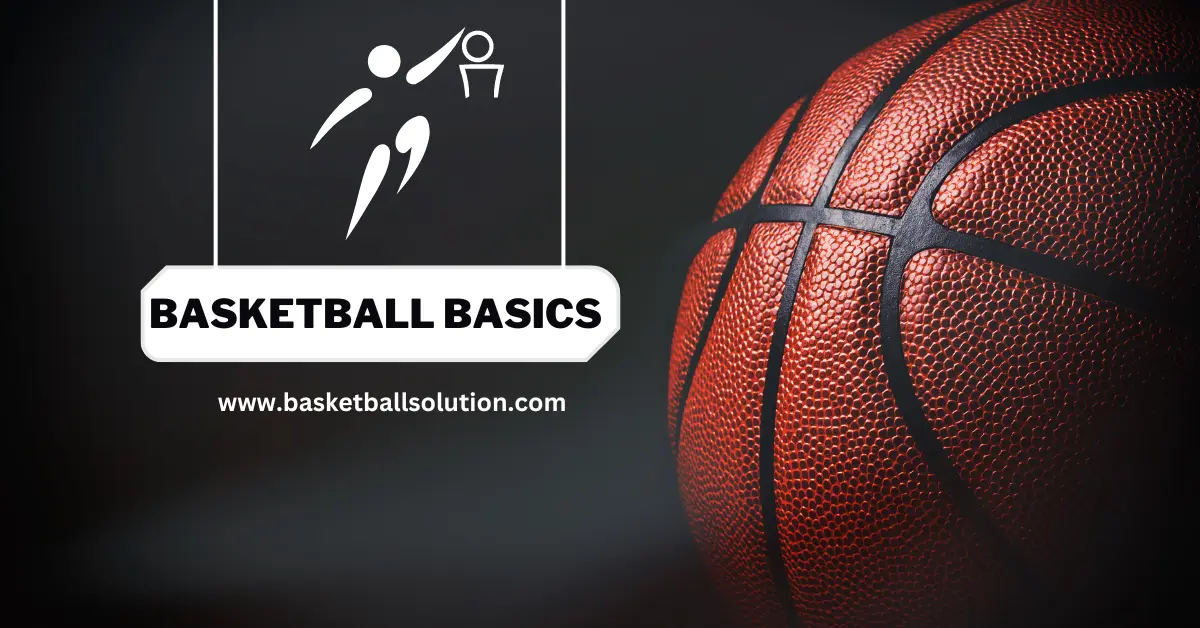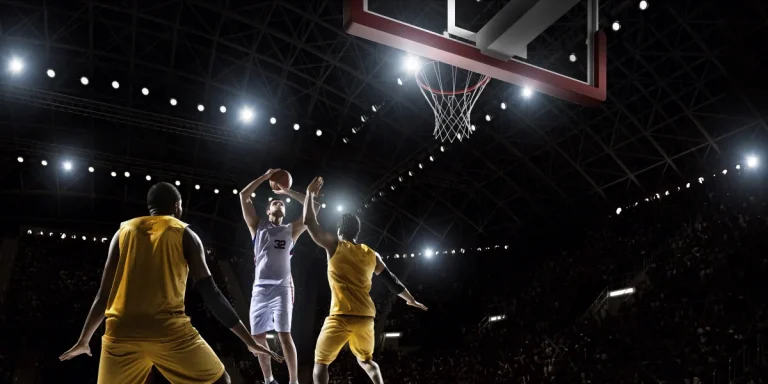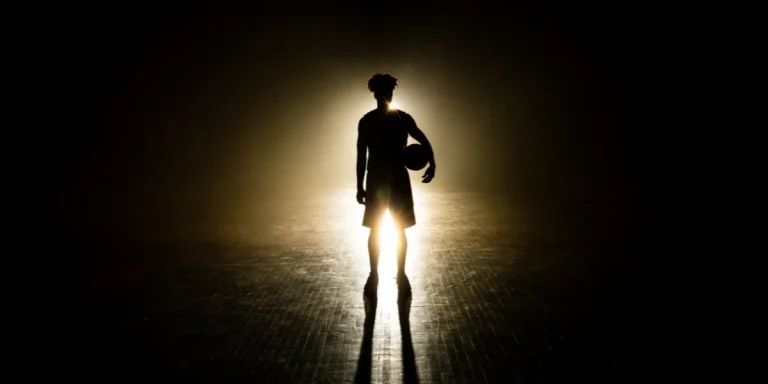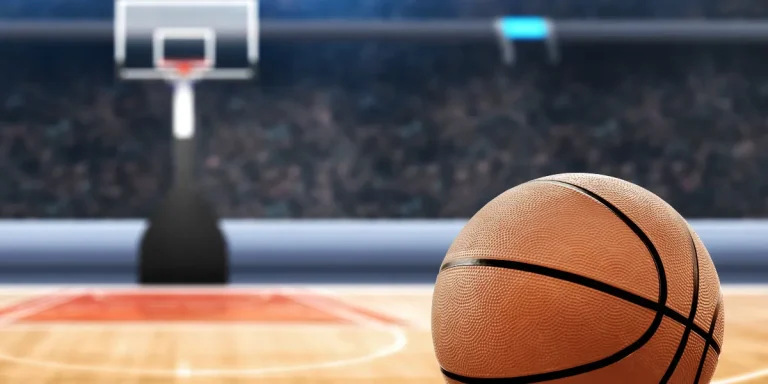Basketball Basics – Rules, Positions & Fouls
Basketball is a fun game played by two teams, each with the same number of players. Every player has a different role but shares the same goal: getting the ball through the hoop to score. The exciting part is when teams try their best to pass the ball and score points. However, to keep things fair, basketball has some rules that all players must follow. In this post, we’ll cover everything from the basics to more advanced stuff, so you can learn more about this awesome sport.
Basics of Basketball Game
The basics of basketball contain the necessary information required while playing the game. It includes rules of basketball, points, fouls and violation of games, and more.
Game Rules
The basketball game rules are straightforward; there are no typical rules in the regulation chart. such as
- Basketball is not an individual game; it is purely a team game. Individuals can practice separately, but the basketball match is played as a team.
- Each team consists of five players. Each player aims to pass the ball through the hoop mounted ten feet above the court surface.
- A rectangular basketball court has a hoop on each side of the court.
- A basketball game starts with a heavy jump at the mid-court bar.
- The offensive team begins by tossing the ball behind the mid-court bar. They’ve got 10 seconds to get the ball over the mid-court bar. If they cannot do so, the defense takes the ball.
- If the offensive team succeeds in getting the ball over the mid-court bar, they will lose possession of the ball behind it. If it ever does, the ball is given to the defense.
These are the basics of the basketball game. It is enough to understand the game rules. The team that tries to pass the basketball through the hoop is known as the offensive team. At the same time, the other team is referred to as the defense. The defense attempts to intercept the ball, block shots, divert passes, and grab rebounds.
Points
- The most common scoring line in basketball games is two-point baskets. It happens when players pass the ball through the hoop. The ball is given to the other team.
- The NBA introduced three-point shooting in 1980. If a player makes a shot just beyond the three-point arc, they receive three points.
- Free throws score one point. One point is given to each team based on the basketball rules, such as the number of fouls attempted in half or the kind of foul attempted.
- Foul shooters are awarded two to three free throws after ensuring where they were standing while shooting. The shooter was awarded three shots if they were outside the three-point line.
The Court
The place where basketball is played is known as the basketball court. A boundary surrounds basketball. The referee stops the match if a player touches the borderline while holding the basketball. It is known as out of bounds.
The dimensions of the court do not remain the same for all matches. It varies based on the tournaments. The court is 74 feet long and 42 feet wide in high schools and gyms. The NBA measures a longer and wider court than the previous one. It measures 94 feet long and 50 feet wide and is used for NBA tournaments.
There are many other important arcs on the court, such as:
- Midcourt Line: The midcourt line divides the court into two equal parts. One of the most effective mid-court line regulations is that once the offensive team crosses the mid-court line while holding the basketball, the player cannot cross the mid-court line again until the defensive team touches the basketball.
- Free Throw Line: The free throw lines mark fifteen feet away from both sides’ backboards. Players shoot free throws from this line. When a player makes a free throw, the opponent has no permission to defend.
- Three Point Line: Three-point lines are drawn in both halves of the court. A shot from the other side of the three-point line is worth three points. The shots that are made inside the three-point line score two points.
Game Clock
Each game is separated into parts. Every game has two sections. In college games, every period is 20 minutes long.
At the college level, each half is divided into other parts known as quarters. This gap is shorter than the half part.
If the match is tied at the end of the time, then extra time is granted to the teams until one wins.
Players’ Position
1. Point Guard
The squad is generally led by the point guard. They are the team’s youngest members, yet they are exceptional ball handlers and passers and drive the ball very quickly, and are good at dribbling. They create shots for themselves as well as their teammates.
2. Shooting Guard
One of the toughest positions on the basketball court is the shooting guard. A shooting guard is also known as a sharpshooter. They must possess skills in dribbling and making passes to team guards.
3. Small Forward
A player positioned as a small forward has several skills. They play both inside and outside of the three-point line. They play against short and long players.
4. Power Forward
The power forward position is just like the center position. They have similar tendencies, but power forwards can shoot the ball from outside the line.
5. Center
The tallest player on the squad plays at the center position on the court. With the center position, they block the opponent’s team as a defense and make shots near the hoop as an offense.
Fouls
In basketball basics, players attempt fouls during a game. A team can gain the ball without stealing it from an opponent in various ways. One example is when the opposing team commits a foul or a penalty.
There are several kinds of fouls such as:
Personal Fouls
A personal foul occurs when a defensive player touches the offensive player’s body to steal the ball. Defenders may only defend by moving parallel to the offensive player or distracting him without touching his body. The defender has to stop the offensive player from progressing toward the goal. He can only touch the basketball, not the offensive player’s body. It will be a foul if he makes contact with the offensive player’s body.
Shooting Fouls
A shooting foul occurs when an offensive player attempts to shoot the ball while a defensive player touches the offensive player’s body. In this case, if a player attempts a two-pointer, they get two free throws, and if they attempt a three-pointer, they get three free throws.
Flagrant Fouls
A flagrant foul occurs when an offensive player attempts to shoot the ball into the goal. In contrast, a defensive player pushes the offensive player’s body hard, or the defender hits the offensive player with his elbow. There are Flagrant-1 and Flagrant-2 foul. In both situations, the opposing team gets two free throws and possession. Possession means the offensive team will start the game after attempting the two free shots.
Technical Fouls
Basketball is one of the most well-known sports in the world. Every single player wishes to win. To win, players try something other than touching the opposite player, which is against sportsmanship. After committing the first technical foul, the opposing team awards free throws and possession. If the referee discovers two technical fouls by the same team, they will eject the players.
Violations
- Walking: Traveling is taking more than two steps without dribbling the basketball. “Traveling” is when you move your pivot foot after dribbling.
- Carrying: When players dribble the basketball with their hands too far to the side or beneath the ball, this is carrying or palming.
- Double Dribble: Basketball players dribble from one place to another. When he stops dribbling, he must shoot or transfer the ball to another player rather than dribbling again. It is a double-dribbling foul if he does.
- Held ball: At times, two or more opposing players will seize control of the ball at the same moment. To avoid an extended and violent conflict, the referee calls a halt to the activity and alternately delivers the ball to one team or the other.
- Goaltending: A goaltending violation in basketball occurs when a player interferes with a shot by touching the ball on its descent to the basket or when it is over, on, or within the hoop’s rim.
- Backcourt violation: Once the offensive player crosses the mid-court line, they cannot cross it again during possession. If they do, the opposing team gains possession of the ball and must pass it inbounds.
- Time restrictions: A player passing the ball inbounds has five seconds to do so. If he does not, the ball is given to the opposing team. Other time constraints include the rule that a player cannot have the ball for more than five seconds when tightly defended and, in some states and levels, shot-clock limits that require a team to attempt a shot within a specific time window.
FAQs
How old is the game of basketball?
The basketball game was introduced by a Canadian-American teacher and physician, James Naismith, in 1950. He presented the official rule book of basketball, which contains 13 rules. Indoor basketball games were popular in the beginning.
How long does a basketball game last?
Basketball games are typically 48 minutes long. One game has four parts. Each part lasts 12 minutes. The game clock does not remain active throughout the game. Officials must stop the game clock for halftime, foul time, and time out.
How many points are gained in a basketball game?
In basketball basics, players can score one to four points, depending on various terms and circumstances. To receive the highest possible score, players must meet the requirements.
Can you score 5 points in basketball?
In a single basketball possession, a player can score five points by getting fouled while shooting a three-pointer and making the shot. This is the only way to get five points in a row.
What is the shot clock?
The basketball clock’s second name is a shot clock. A shot clock tracks each step of the basketball game, like ball holding time, duration, break time, and time out. The shot clock resumes after passing the ball through the hoop.
Conclusion
A basketball game has several rules and regulations. If someone goes against the rules, he has to face the penalties. This article explains some basics regarding basketball. It is enough for someone to start a basketball game.

Passionate basketball player striving for excellence on and off the court. Dedicated to the game since youth, I have honed skills through years of practice. Explore my journey, gear reviews, and dunking tips. Let’s elevate our game together!







